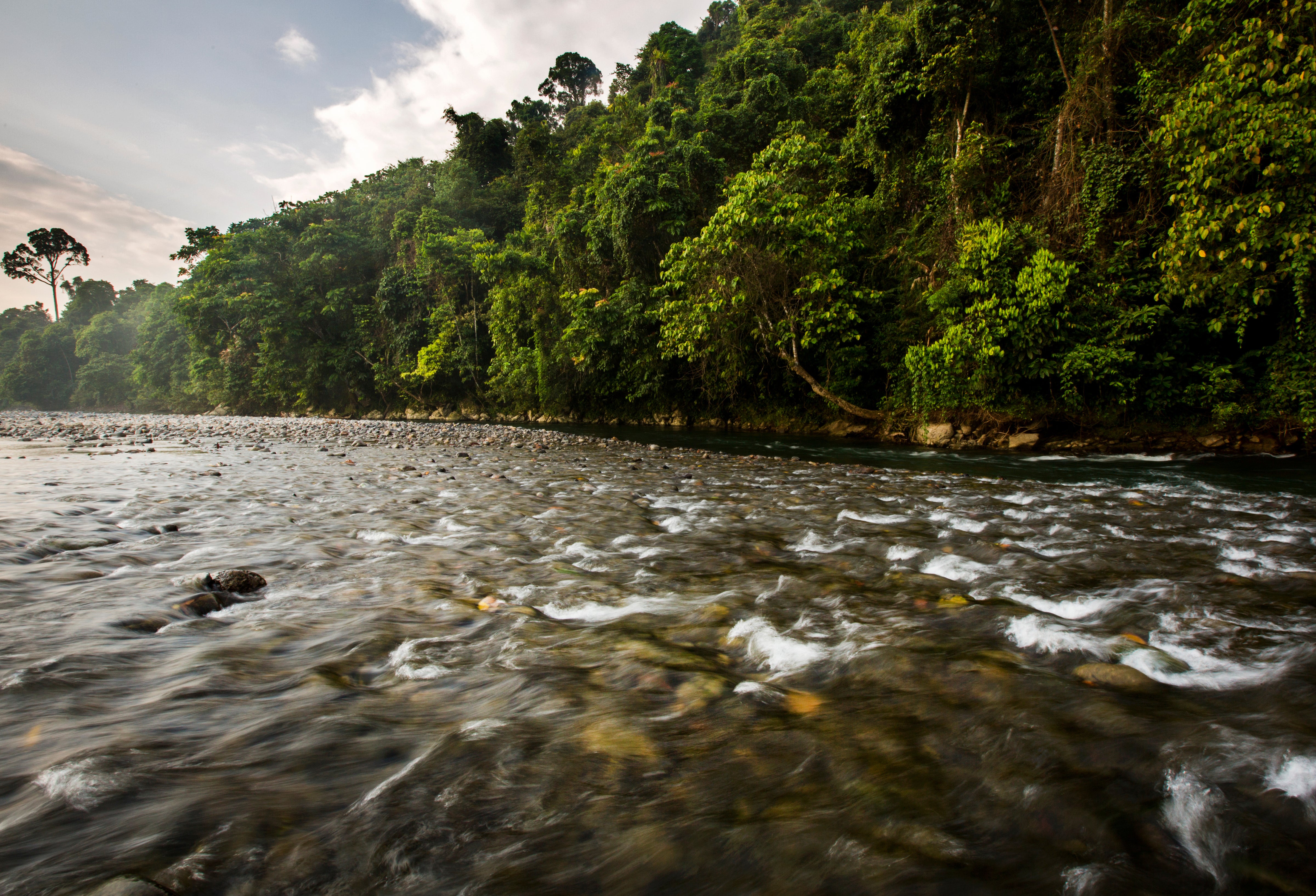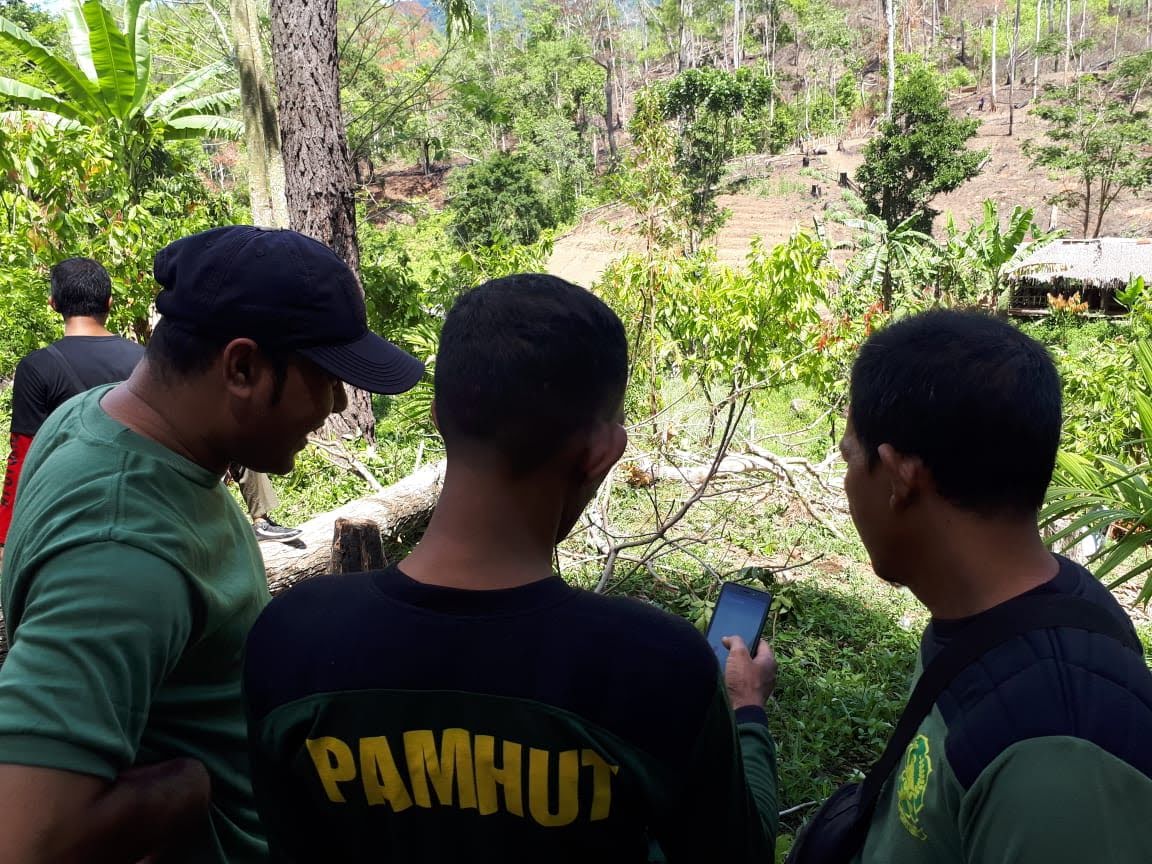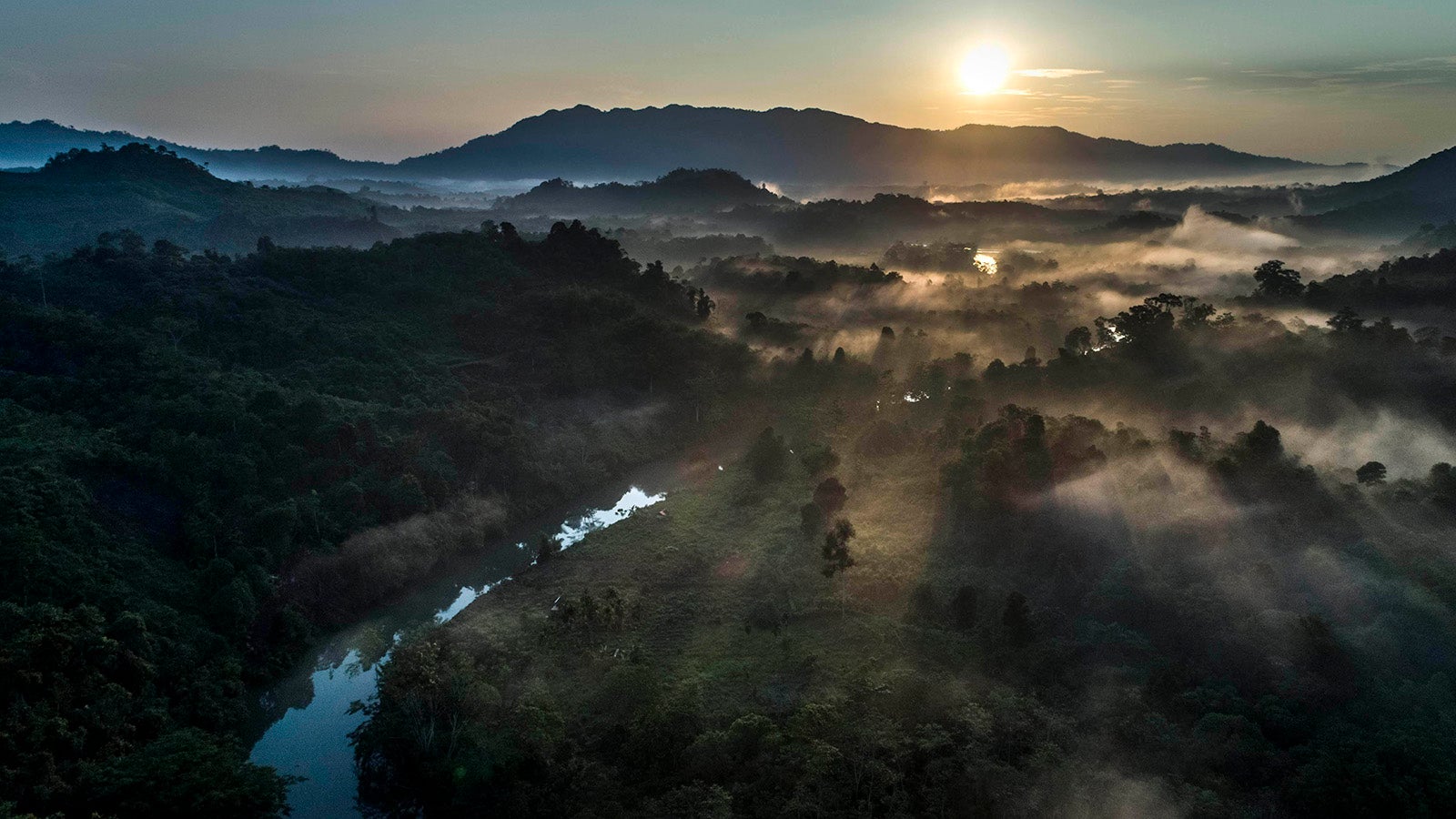The Leuser Ecosystem (pictured here) is crucial for the livelihood of more than 4 million people living in the province. Photo Credit: Nanang Sujana
Rainforest. What does that word mean for you? What kind of emotions does it invoke? Indifference? Somewhere faraway and irrelevant to you? Fear? Scary deep dark woods where strange creatures live? Or a sense of wonder? Landscape filled with unique living beings threatened by the bulldozers that will destroy it in the name of “development”?
Growing up in Sumatra, a large Indonesian island, a rainforest was not supposed to be far away. Yet I didn’t recall visiting one until I became a young adult in university, studying biology. But I, like so many of you, have unknowingly drawn benefits from a healthy, living rainforest ecosystem all my life. The clean water flowing through the river was filtered by a healthy rainforest. The healthy reef ecosystem was protected by the rainforest upstream. About 7,000 medical compounds prescribed by Western doctors are derived from plants, and about 2,000 of the plants that have potential anti-cancer properties are endemics to the rainforest.

Photo Credit: Paul Hilton
I work in the Leuser Ecosystem in Sumatra, a vast 2.6 million hectares of tropical rainforest with different terrains – montane, peat forest, lowland forest. It is an ancient ecosystem and one of the most biodiverse places on earth. Many of us have heard about the Amazon, the Okavango Delta, the Serengeti, but amongst the not-so-long list of pristine and fragile wild ecosystems that populate our travel wish lists, is the Leuser Ecosystem.
Approximately three decades ago, the population ranges of the Sumatran tiger and the Sumatran rhino were widespread throughout South East Asia, but due to habitat destruction, fragmentation and wildlife poaching, the Leuser Ecosystem has become the last place on earth where rhinos, tigers, elephants and orangutans still roam together in the wild.
Protecting the environment is the responsibility of all of us, not just conservationists. The environment is the thread that links all of us, it is (quite literally), the water we drink and the air we breathe. In the current situation of the pandemic and as we face the bigger threat of a changing climate, it is more important than ever to increase collaborations between different disciplines, backgrounds, and expertise to protect the environment and tackle the challenges it faces for the better of humanity.
There is a massive potential for the tech community to be involved in this conservation. Technology has enabled us to accelerate our knowledge on climate change, from the rate of change, the cause, as well as the implication. Technology has to claim a seat at the table to develop innovative solutions to the biggest problem humanity is facing; A rapidly changing climate and the degradation of our shared life support system. However, one must never assume that the advancement of technology alone would produce the solution.
Technology and Conservation; Ground for Collaboration
I still remember seeing my first camera trap footage of a tiger with her two cubs, and felt instantly mesmerized by the realness of it. Although I know that tigers roam the rainforest, seeing it on the camera trap footage makes it feel real. Solid.
Ecologists have long seen that rainforests have acted like single living, breathing organisms, and a destruction to one part could hurt the other part – Elizabeth Colbert explored this in her book the Sixth Extinction, but more recently, scientific research finds trees actually talk to each other. We now know a lot about the importance of protecting our rainforests. Over generations, through these scientific findings we allow ourselves to see trees, forests, for more than just resources to exploit – they become more… alive. More, like us, somewhat. Technology could accelerate that process of gaining an even better understanding of our rainforest ecosystem, but the threat is accelerating as well. Time is of essence and we must do everything we can to take action and ensure we don’t lose these precious ecosystems.
Campaign, Collaboration and Community Engagement: Our Approach to Conservation
My organization, HAkA, or short in Bahasa Indonesia for Forest, Nature, and Environment Aceh, takes advocacy and policy change route towards conservation. We aim toward improving protection of the Leuser Ecosystem and strengthening the role and participation of local communities. This is achieved through collaborations with local, national, and international partners from different fields of work in order to galvanize support towards environmental protection, campaigns for better policies and creating noise on destructive development plans that destroy pristine ecosystems. Additionally, empower local communities with the tools and skills that can influence others to take actions to protect the environment, as well as improving livelihood for the human communities.

Photo Credit: Yayasan HAkA
Today, we have adopted some available tools to our work which have contributed to combating illegal forestry activities and increased protection. One of those tools is Forest Watcher, a mobile based app developed by Global Forest Watch that allows for forest monitoring and alerts systems from the Global Forest watch to be used offline and be brought into the field. The advantages of this tool are to better plan monitoring areas based on the alerts, as well as rapid response for the occasion of hotspots. We have conducted training on this tool with local partners and government authorities since 2018, and will continue to follow up until the use of these tools are widespread and central to their work.
Forest Watcher is a small example of how the involvement of the tech community can contribute towards environmental protection and increasing collaboration between the related stakeholders. There are ample opportunities to find the solutions to preserve the last ecosystems in the world for now and the future generations. The COVID-19 pandemic is a reminder to all of us to respect and be immersed into the natural world. We do not have all the answers, hence collaboration is crucial. We all need a healthy planet, let’s work together on this.
To learn more about ways technology can help support understanding and preservation of the rainforest, check out the Rainforest XPRIZE.
Farwiza Farhan is the chairperson of Forest, Nature and Environment Aceh (HAkA), an organization with the mission to protect, conserve and restore the Leuser ecosystem. She also serves on the board of advisors for Women Earth Alliance, an organization that seeks to catalyze the women-led, grassroots solutions to protect the environment.
Irham Hudaya Yunardi is the Campaign and Communications Officer at Forest, Nature, and Environment of Aceh (HAkA).
